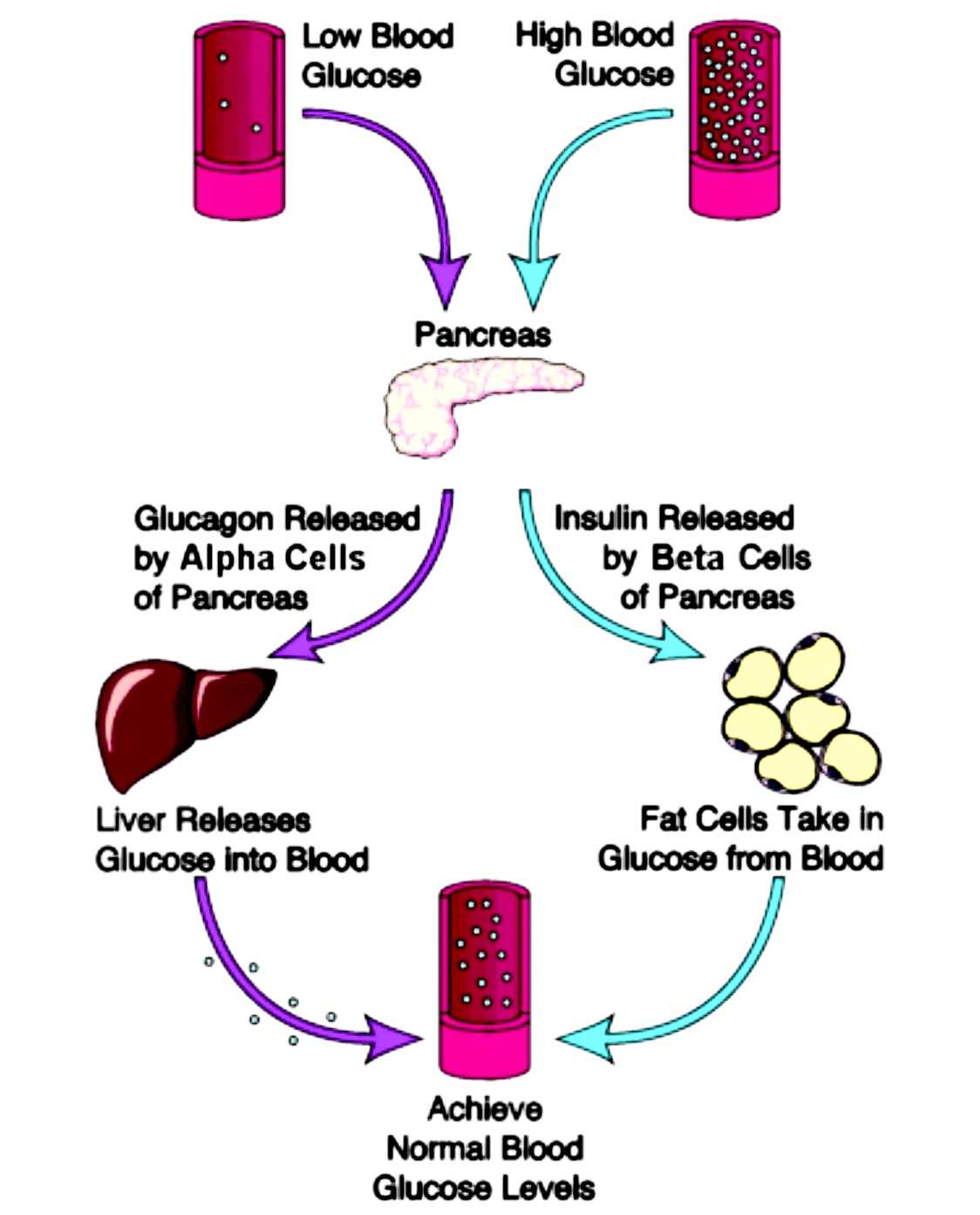
INSULIN AND GLUCAGON
Insulin and glucagon are hormones secreted by islet cells within the pancreas. They are both secreted in response to blood sugar levels, but in opposite fashion.
Insulin is normally secreted by the beta cells (a type of islet cell) of the pancreas. The stimulus for insulin secretion is a HIGH blood glucose. Although there is always a low level of insulin secreted by the pancreas, the amount secreted into the blood increases as the blood glucose rises. Similarly, as blood glucose falls, the amount of insulin secreted by the pancreatic islets goes down.
insulin has an effect on a number of cells, including muscle, red blood cells, and fat cells. In response to insulin, these cells absorb glucose out of the blood, having the net effect of lowering the high blood glucose levels into the normal range.
Glucagon is secreted by the alpha cells of the pancreatic islets in much the same manner as insulin...except in the opposite direction. If blood glucose is high, then no glucagon is secreted.
When blood glucose goes LOW, however, (such as between meals, and during exercise) more and more glucagon is secreted. Like insulin, glucagon has an effect on many cells of the body, but most notably the liver.
The Role of Glucagon in Blood Glucose Control
The effect of glucagon is to make the liver release the glucose it has stored in its cells into the bloodstream, with the net effect of increasing blood glucose. Glucagon also induces the liver (and some other cells such as muscle) to make glucose out of building blocks obtained from other nutrients found in the body (eg, protein).
by the end of this lesson, students should learn about
- Structure and function of pancreas
- insulin and it's metabolic effects
- glucagon and it's effects
- role of insulin and glucagon
- blood glucose regulation


